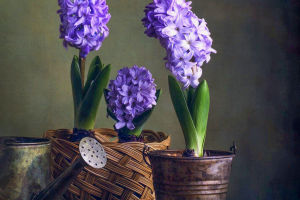In a world teeming with inventions, few objects have captivated and mystified humanity quite like the mirror.
Often taken for granted as a functional item, the mirror holds a profound significance in our lives, serving as a portal to self-reflection, aesthetics, and even spirituality.
Its mesmerizing allure lies in its ability to reveal the visible and the invisible, offering glimpses into the depths of our souls and the ever-changing nature of our existence.
The mirror, in its simplest form, is a polished surface that reflects light. Its origins can be traced back to ancient times, when primitive versions were crafted from various materials like obsidian, bronze, and polished metal.
The ancient Egyptians, Greeks, and Romans recognized the mirror's power, associating it with divine forces and considering it a tool to bridge the realms of the living and the dead.
Beyond its historical significance, the mirror has become an indispensable object in our daily lives.
From its place in our bathrooms to its presence in art studios and fashion runways, it plays an essential role in shaping our self-image and enhancing our aesthetic experience.
Mirrors possess a transformative quality, allowing us to craft our identities and project ourselves to the world. They hold the potential to reveal our most intimate secrets and amplify our inherent beauty.
However, the mirror's enchantment extends far beyond mere appearances.
It has fascinated philosophers, psychologists, and spiritual seekers throughout the ages. Mirrors have been linked to introspection and self-awareness, as they invite us to gaze upon our own reflections and confront our deepest fears and desires.
They can serve as a mirror for the soul, reflecting our innermost thoughts, emotions, and aspirations, sometimes revealing truths we may have long suppressed.
Moreover, mirrors have found their way into folklore, literature, and mythology, further deepening their enigma. In tales such as "Snow White" and "Alice Through the Looking Glass," mirrors symbolize gateways to alternative realities and parallel dimensions, blurring the lines between fantasy and reality.
They have been associated with superstitions and legends, believed to possess the power to trap souls, reveal hidden entities, or even foretell the future.
The mirror's allure has also been harnessed by artists and photographers who utilize its reflective properties to create thought-provoking and visually stunning works. From Salvador Dali's surrealistic explorations to the self-portraits of Frida Kahlo, mirrors have served as artistic tools, capturing fragments of the human experience and provoking introspection in their viewers.
In our technologically advanced era, mirrors have undergone a remarkable transformation.
Smart mirrors equipped with digital screens, sensors, and artificial intelligence now offer personalized experiences, from virtual try-ons of clothes and makeup to fitness tracking and augmented reality applications.
These innovations further exemplify the mirror's adaptability and ability to integrate seamlessly into our modern lives.
The mirror, with its multi-faceted nature, continues to captivate and intrigue us. It holds a timeless allure, enticing us to peer into its reflective depths and explore the enigmatic landscapes within ourselves.
Whether we seek self-reflection, aesthetics, or spiritual connections, the mirror remains an enduring symbol, guiding us on a journey of self-discovery and reminding us that there is always more than meets the eye.


